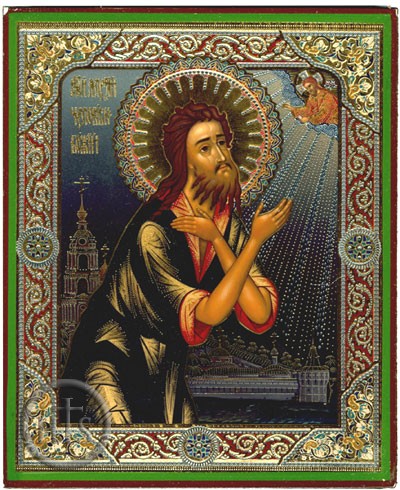
St. Alex

St. Alex or Saint Alexius or Alexis of Rome or Alexis of Edessa was an Eastern saint whose veneration was later transplanted to Rome. The relocation of the cult to Rome was facilitated by the belief that the saint was a native of Rome and had died there. This Roman connection stemmed from an earlier Syriac legend which recounted that during the episcopate of Bishop Rabbula (412-435) a “Man of God” who lived in Edessa, Mesopotamia as a beggar, and who shared the alms he received with other poor people, was found to be a native of Rome after his death.
The Greek version of his legend made St. Alex the only son of Euphemianus, a wealthy Christian Roman of the senatorial class. Alexius fled his arranged marriage to follow his holy vocation. Disguised as a beggar, he lived near Edessa in Syria, accepting alms even from his own household slaves, who had been sent to look for him but did not recognize him, until a miraculous vision of the Blessed Virgin Mary singled him out as a “Man of God.”
Fleeing the resultant notoriety, St. Alex returned to Rome, so changed that his parents did not recognize him, but as good Christians took him in and sheltered him for seventeen years, which he spent in a dark cubbyhole beneath the stairs, praying and teaching catechism to children. After his death, his family found writings on his body which told them who he was and how he had lived his life of penance from the day of his wedding, for the love of God.
St. Alex cult developed in Syria and spread throughout the Eastern Roman Empire by the 9th century. Only from the end of the 10th century did his name begin to appear in any liturgical books in the West.
Since before the 8th century, there was on the Aventine in Rome a church that was dedicated to St Boniface. In 972 Pope Benedict VII transferred this almost abandoned church to the exiled Greek metropolitan, Sergius of Damascus. The latter erected beside the church a monastery for Greek and Latin monks, soon made famous for the austere life of its inmates. To the name of St Boniface was now added that of St. Alex as titular saint of the church and monastery known as Santi Bonifacio e Alessio.
It is evidently Sergius and his monks who brought to Rome the veneration of St. Alex. The Eastern saint, according to his legend a native of Rome, was soon very popular with the folk of that city, and this church, being associated with the legend, was considered to be built on the site of the home that Alexius returned to from Edessa.
St. Alex is mentioned in the Roman Martyrology under 17 July in the following terms: “At Rome, in a church on the Aventine Hill, a man of God is celebrated under the name of Alexius, who, as reported by tradition, abandoned his wealthy home, for the sake of becoming poor and to beg for alms unrecognized.”
While the Roman Catholic Church continues to recognize St. Alex as a saint, his feast was removed from the General Roman Calendar in 1969. The reason given was the legendary character of the written life of the saint. The Catholic Encyclopedia article regarding St. Alex remarked: “Perhaps the only basis for the story is the fact that a certain pious ascetic at Edessa lived the life of a beggar and was later venerated as a saint.”
The Tridentine Calendar gave his feast day the rank of “Simple” but by 1862 it had become a “Semidouble” and, in Rome itself, a “Double”. It was reduced again to the rank of “Simple” in 1955 and in 1960 became a “Commemoration“. According to the rules in the present-day Roman Missal, the saint may now be celebrated everywhere on his feast day with a “Memorial“, unless in some locality an obligatory celebration is assigned to that day.
The Eastern Orthodox Church venerates St. Alex on 17 March. Five Byzantine Emperors, four Emperors of Trebizond and numerous other eastern European and Russian personalities have borne The name Alex